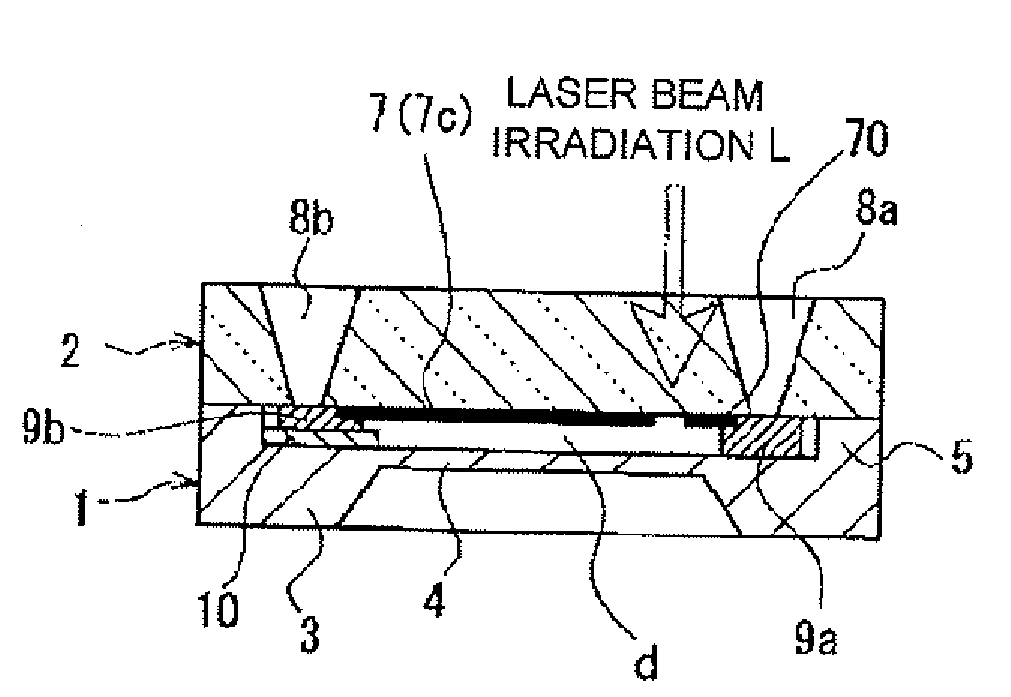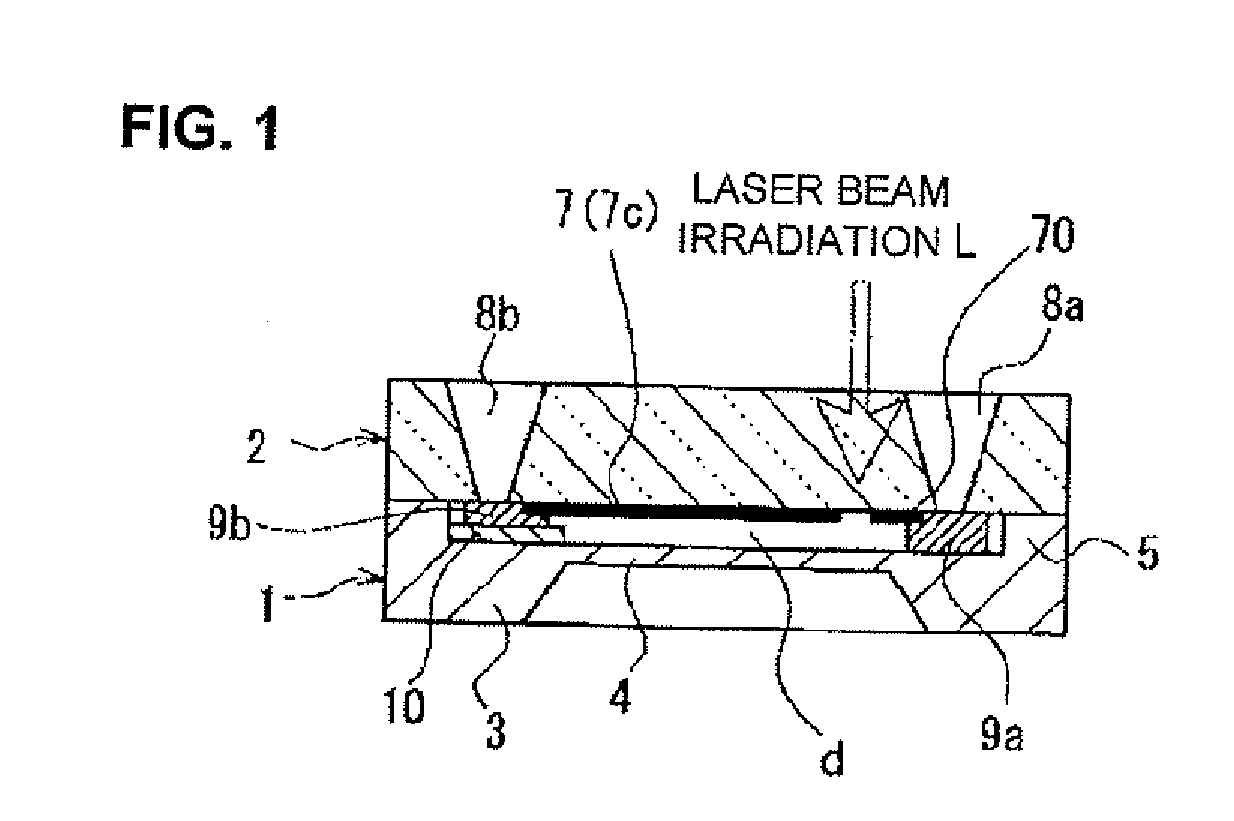Semiconductor physical quantity sensor of electrostatic capacitance type and method for manufacturing the same
a technology of electrostatic capacitance and semiconductors, applied in the direction of force measurement, instruments, semiconductor devices, etc., can solve the problems of inability to obtain desired sensor characteristics, inability to detect pressure, and inability to move the pressure-sensing portion b>4/b>, so as to prevent the formation of bonding voids and reduce the size of the chip
- Summary
- Abstract
- Description
- Claims
- Application Information
AI Technical Summary
Benefits of technology
Problems solved by technology
Method used
Image
Examples
Embodiment Construction
[0026] Hereinafter, a semiconductor physical quantity sensor of electrostatic capacitance type (hereafter referred to as capacitance type sensor) according to an embodiment of the present invention will be described with reference to the drawings. FIG. 1 shows a cross-sectional structure of a capacitance type sensor according to an embodiment of the present invention, while FIG. 2 is a top plan structure of the sensor, in which a glass substrate 2 is transparent, and a fixed electrode 7 and so on are shown in a see-through manner. The drawings show a silicon substrate 1 (semiconductor substrate) as a wafer corresponding to one sensor chip part together with the glass substrate 2 (insulating substrate), while in an actual manufacturing process, areas corresponding to the glass substrate 2 are allocated on the surface of a large glass substrate. This similarly applies to the silicon substrate 1.
[0027] Before anodic bonding to bond both substrates, the fixed electrode 7 and lead porti...
PUM
 Login to View More
Login to View More Abstract
Description
Claims
Application Information
 Login to View More
Login to View More - R&D
- Intellectual Property
- Life Sciences
- Materials
- Tech Scout
- Unparalleled Data Quality
- Higher Quality Content
- 60% Fewer Hallucinations
Browse by: Latest US Patents, China's latest patents, Technical Efficacy Thesaurus, Application Domain, Technology Topic, Popular Technical Reports.
© 2025 PatSnap. All rights reserved.Legal|Privacy policy|Modern Slavery Act Transparency Statement|Sitemap|About US| Contact US: help@patsnap.com



